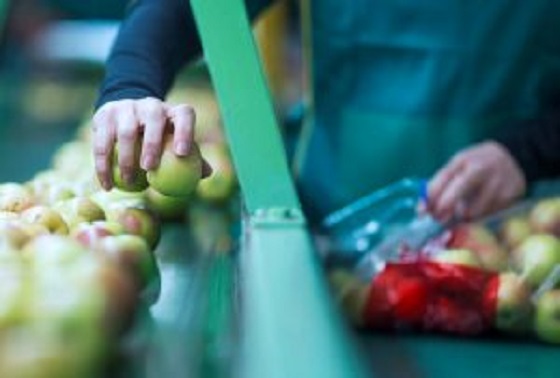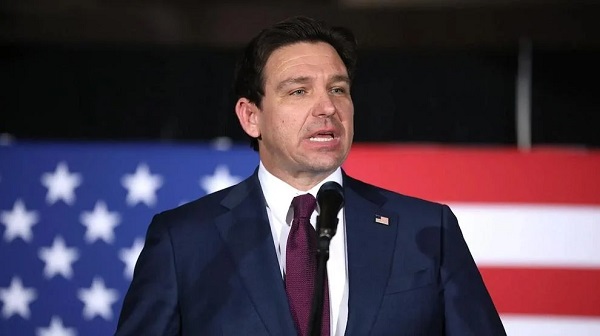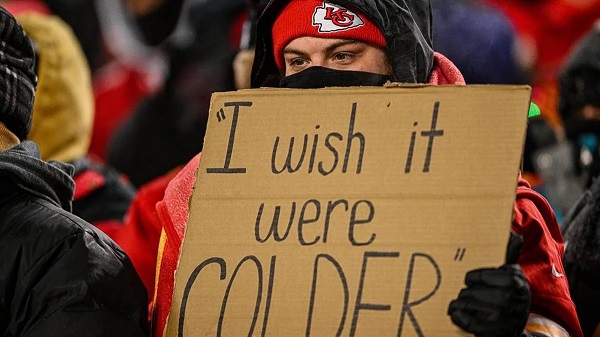Energy
From Sippy Cups to Solar Panels: Why a Blanket Ban on Plastics Misses the Mark

From EnergyNow.ca
By Canada Powered by Women
Repeated attempts by the federal government to implement a sweeping ban on plastics don’t consider the crucial role plastics play in the lives of Canadians and energy transformation.
Plastic is in many products we need every day, including medical equipment, headphones, car seats, menstrual products and computers. For mothers enjoying summer with their kids — don’t forget sippy cups, running shoes and diapers (to name a few).
In Canada, as many as 70,000 plastic products are made every day. They are essential, whether we’re working, having fun or simply trying to go about our daily lives.
The chemistry and plastics sector is also the third largest manufacturing sector in Canada, employing more than 190,000 people and shipping more than $108 billion in products in 2022.
So, this fall when the Appeals Court revisits the federal government’s move that labelled many plastics as “toxic”, engaged women from across the country are going to be watching.
They’re watching because the use of plastic touches many areas of their personal lives and interests.
Plastic is a critical component in the energy transformation (which we know engaged women care a lot about) and it’s intricately connected to the development and deployment of renewable energy technologies. These are important considerations for our country’s broader energy policy and sustainability goals, and engaged women are paying attention because they’re not convinced Canada has energy policies that positively affect prosperity.
Engaged women in Canada have also told us they want a balanced approach on the environment, energy and economic prosperity. As a result, their understanding of policies is deepening, and they are focusing on long-term prosperity and affordability while striving for a well-rounded strategy when it comes to policymaking.
So how did we get here with the plastics issue, and what happens next?
The single-use plastic ban that started it all
In 2019, the federal government announced it would seek to ban single-use plastic items such as straws, cutlery, take out containers, stir sticks and plastic bags to reduce plastic waste.
The ban came into effect in 2022 after the federal government added all plastic manufactured items (PMIs) to a toxic substance list (a key step in allowing it to ban these items).
Waste management is a provincial responsibility, but the federal government is able to regulate substances for environmental protection if they are listed as toxic under the Canadian Environmental Protection Act.
In 2023, a federal court reviewed the legislation after complaints surfaced saying Ottawa failed to demonstrate enough scientific evidence to justify the sweeping regulations.
The court agreed, ruling that the federal government exceeded its authority by listing all PMIs as toxic, calling the move “unreasonable and unconstitutional”.
The federal government appealed the decision, and on June 25-26 this year, the Federal Appeals Court heard arguments for and against listing all PMIs as toxic.
A decision on the appeal is expected this fall, and the outcome of the ruling has many concerned about what future bans and other restrictive regulations and policies will mean for everyday Canadians.
How plastics restrictions could hurt Canadians
Christa Seaman, vice-president of the plastics division with the Chemistry Industry Association of Canada, says further restrictions on using plastic will have serious ramifications.
“If we start to take away plastic packaging that’s keeping our food safe, for example, you’ll actually see increased cost to consumers because food is going to spoil before it gets to market or shipping is going to be more expensive because the packaging for the products are going to weigh more,” says Seaman.
Seaman also highlights restrictions on plastics could limit the availability of certain products that rely on plastic packaging or components, and Canadians may have reduced access to the variety of inexpensive goods we use today.
Plastics play a big role in low-carbon technology development
There are sustainable ways to keep plastics out of the environment and in the economy, Seaman says, particularly because of the key role they’re already playing in the proliferation of green technologies.
For example, batteries in electric vehicles (EVs) are heavier than in vehicles with internal combustion engines so plastics are being used to manufacture EVs.
“Plastics, being lightweight and durable, are key to keeping the weight of the vehicle down,” she says. “We have less wear and tear on our roads and we’re actually able to increase the driving range per charge, without compromising safety at all.”
Plastics also make renewable energy sources like wind and solar possible, Seaman says. They are a key component in solar panels, and blades of wind turbines are made with fibreglass and other plastic composite materials.
Rather than an outright ban on plastics, we’d be better off exploring how a circular economy — one that includes the appropriate use, reuse and recycling of plastics — can keep plastic waste out of the environment and create a more sustainable future.
Some provinces and territories have also initiated an important shift in responsibility by making producers of plastic products responsible for funding their collection and recycling, Seaman says.
“Provinces are setting the guidelines on achieving certain benchmarks and targets for recyclability, which will go back to how the products are designed,” she says. “The cheaper and easier it is to recycle, the less they’re going to have to spend on the recycling system in the end.”
Seaman says the industry goal is to focus on reduction first by making packaging smaller or thinner. Then the focus turns to reusing plastics, and once those options are exhausted the goal is to recycle.
What we need from policymakers
Listing all plastics as toxic, and then implementing bans around their use, is heavy-handed and misguided.
Seaman says a collaborative approach between policymakers and producers is what’s needed now, and policy should reflect what’s best for the public, the environment and the economy.
“We need all solutions to be on the table: your compostable, your biodegradable, your advanced recycling, your mechanical recycling.”
Seaman says the focus should be placed on outcome-based regulations and science.
“Let’s talk about the outcomes we’re all trying to achieve, because nobody wants to see plastics in the environment, in the waterways or in landfill. Let’s look at what targets need to be and find a way to get there together.”
Energy
Liberals Twisted Themselves Into Pretzels Over Their Own Pipeline MOU

From Energy Now
By Margareta Dovgal
Playing politics with pipelines is a time-honored Canadian tradition. Recent events in the House of Commons offered a delightful twist on the genre.
The Conservatives introduced a motion quoting the Liberals’ own pipeline promises laid out in the Memorandum of Understanding (MOU) with Alberta, nearly verbatim. The Liberals, true to form, killed it 196–139 with enthusiastic help from the NDP, Bloc, and Greens.
We all knew how this would end. Opposition motions like this never pass; no government, especially not one led by Mark Carney, is going to let the opposition dictate the agenda. There’s not much use feigning outrage that the Liberals voted it down. The more entertaining angle has been watching closely as Liberal MPs twist themselves into pretzels explaining why they had to vote “no” on a motion that cheers on a project they claim to support in principle.
Liberal MP Corey Hogan dismissed the motion as “game-playing” designed to “poke at people”.
And he’s absolutely right to call it a “trap” for the Liberals. But traps only work when you walk into them.
Indigenous Services Minister Mandy Gull-Masty deemed the motion an “immature waste of parliamentary time” and “clearly an insult towards Indigenous Peoples” because it didn’t include every clause of the original agreement. Energy Minister Tim Hodgson decried it as a “cynical ploy to divide us” that “cherry-picked” the MOU.
Yet the prize for the most tortured metaphor goes to the prime minister himself. Defending his vote against his own pipeline promise, Carney lectured the House that “you have to eat the entire meal, not just the appetizer.”
It’s a clever line, and it also reveals the problem. The “meal” Carney is serving is stuffed with conditions. Environmental targets or meaningful engagement with Indigenous communities aren’t unrealistic asks. A crippling industrial carbon price as a precondition might be though.
But the prime minister has already said the quiet part out loud.
Speaking in the House a few weeks ago, Carney admitted that the agreement creates “necessary conditions, but not sufficient conditions,” before explicitly stating: “We believe the government of British Columbia has to agree.”
There is the poison pill. Handing a de facto veto to a provincial government that has spent years fighting oil infrastructure is neither constitutionally required nor politically likely. Elevating B.C.’s “agreement” to a condition, which is something the MOU text itself carefully avoids doing, means that Carney has made his own “meal” effectively inedible.
Hodgson’s repeated emphasis that the Liberal caucus supports “the entire MOU, the entire MOU” only reinforces this theory.
This entire episode forces us to ask whether the MOU is a real plan to build a pipeline, or just a national unity play designed to cool down the separatist temperature in Alberta. My sense is that Ottawa knew they had to throw a bone to Premier Danielle Smith because the threat of the sovereignty movement is gaining real traction. But you can’t just create the pretense of negotiation to buy time.
With the MOU getting Smith boo’ed at her own party’s convention by the separatists, it’s debatable whether that bone was even an effective one to throw.
There is a way. The federal government has the jurisdiction. If they really wanted to, they could just do it, provided the duty to consult with and accommodate Indigenous peoples was satisfied. Keep in mind: no reasonable interpretation equates Section 35 of the Charter to a veto.
Instead, the MOU is baked with so many conditions that the Liberals have effectively laid the groundwork for how they’re going to fail.
With overly-hedged, rather cryptic messaging, Liberals have themselves given considerable weight to a cynical theory, that the MOU is a stalling tactic, not a foundation to get more Canadian oil to the markets it’s needed in. Maybe Hodgson is telling the truth, and caucus is unified because the radicals are satisfied that “the entire MOU” ensures that a new oil pipeline will never reach tidewater through BC.
So, hats off to the legislative affairs strategists in the Conservative caucus. The real test of Carney’s political power continues: can he force a caucus that prefers fantasy economics into a mold of economic literacy to deliver on the vision Canadians signed off on? Or will he be hamstrung trying to appease the radicals from within?
Margareta Dovgal is managing director of Resource Works Society.
Daily Caller
Paris Climate Deal Now Decade-Old Disaster


From the Daily Caller News Foundation
By Steve Milloy
The Paris Climate Accord was adopted 10 years ago this week. It’s been a decade of disaster that President Donald Trump is rightly trying again to end.
The stated purpose of the agreement was for countries to voluntarily cut emissions to avoid the average global temperature exceeding the (guessed at) pre-industrial temperature by 3.6°F (2°C) and preferably 2.7°F (1.5°C).
Since December 2015, the world spent an estimated $10 trillion trying to achieve the Paris goals. What has been accomplished? Instead of reducing global emissions, they have increased about 12 percent. While the increase in emissions is actually a good thing for the environment and humanity, spending $10 trillion in a failed effort to cut emissions just underscores the agreement’s waste, fraud and abuse.
As a nonprofit, we are dependent on the generosity of our readers.
Please consider making a small donation of any amount here.
Thank you!
But wasting $10 trillion is only the tip of the iceberg.
The effort to cut emissions was largely based on forcing industrial countries to replace their tried-and-true fossil fuel-based energy systems with not-ready-for-prime-time wind, solar and battery-based systems. This forced transition has driven up energy costs and made energy systems less reliable. The result of that has been economy-crippling deindustrialization in former powerhouses of Germany and Britain.
And it gets worse.
European nations imagined they could reduce their carbon footprint by outsourcing their coal and natural gas needs to Russia. That outsourcing enriched Russia and made the European economy dependent on Russia for energy. That vulnerability, in turn, and a weak President Joe Biden encouraged Vladimir Putin to invade Ukraine.
The result of that has been more than one million killed and wounded, the mass destruction of Ukraine worth more than $500 billion so far and the inestimable cost of global destabilization. Europe will have to spend hundreds of billions more on defense, and U.S. taxpayers have been forced to spend hundreds of billions on arms for Ukraine. Putin has even raised the specter of using nuclear weapons.
President Barack Obama unconstitutionally tried to impose the Paris agreement on the U.S. as an Executive agreement rather than a treaty ratified by the U.S. Senate. Although Trump terminated the Executive agreement during his first administration, President Joe Biden rejoined the agreement soon after taking office, pledging to double Obama’s emissions cuts pledge to 50 percent below 2005 levels by 2030.
Biden’s emissions pledge was an impetus for the 2022 Inflation Reduction Act that allocated $1.2 trillion in spending for what Trump labeled as the Green New Scam. Although Trump’s One Big Beautiful Bill Act reduced that spending by about $500 billion and he is trying to reduce it further through Executive action, much of that money was used in an effort to buy the 2024 election for Democrats. The rest has been and will be used to wreck our electricity grid with dangerous, national security-compromising wind, solar and battery equipment from Communists China.
Then there’s this. At the Paris climate conference in 2015, U.S. Secretary of State John Kerry stated quite clearly that emissions cuts by the U.S. and other industrial countries were meaningless and would accomplish nothing since the developing world’s emissions would be increasing.
Finally, there is the climate realism aspect to all this. After the Paris agreement was signed and despite the increase in emissions, the average global temperature declined during the years from 2016 to 2022, per NOAA data.
The super El Nino experienced during 2023-2024 caused a temporary temperature spike. La Nina conditions have now returned the average global temperature to below the 2015-2016 level, per NASA satellite data. The overarching point is that any “global warming” that occurred over the past 40 years is actually associated with the natural El Nino-La Nina cycle, not emissions.
The Paris agreement has been all pain and no gain. Moreover, there was never any need for the agreement in the first place. A big thanks to President Trump for pulling us out again.
Steve Milloy is a biostatistician and lawyer. He posts on X at @JunkScience.
-

 Daily Caller2 days ago
Daily Caller2 days agoChinese Billionaire Tried To Build US-Born Baby Empire As Overseas Elites Turn To American Surrogates
-

 Business2 days ago
Business2 days agoMajor tax changes in 2026: Report
-

 International2 days ago
International2 days agoTwo states designate Muslim group as terrorist
-

 Digital ID2 days ago
Digital ID2 days agoCanada releases new digital ID app for personal documents despite privacy concerns
-

 Censorship Industrial Complex2 days ago
Censorship Industrial Complex2 days agoDeath by a thousand clicks – government censorship of Canada’s internet
-

 Bruce Dowbiggin2 days ago
Bruce Dowbiggin2 days agoNFL Ice Bowls Turn Down The Thermostat on Climate Change Hysteria
-

 Community1 day ago
Community1 day agoCharitable giving on the decline in Canada
-

 Crime1 day ago
Crime1 day agoTrump designates fentanyl a ‘weapon of mass destruction’






